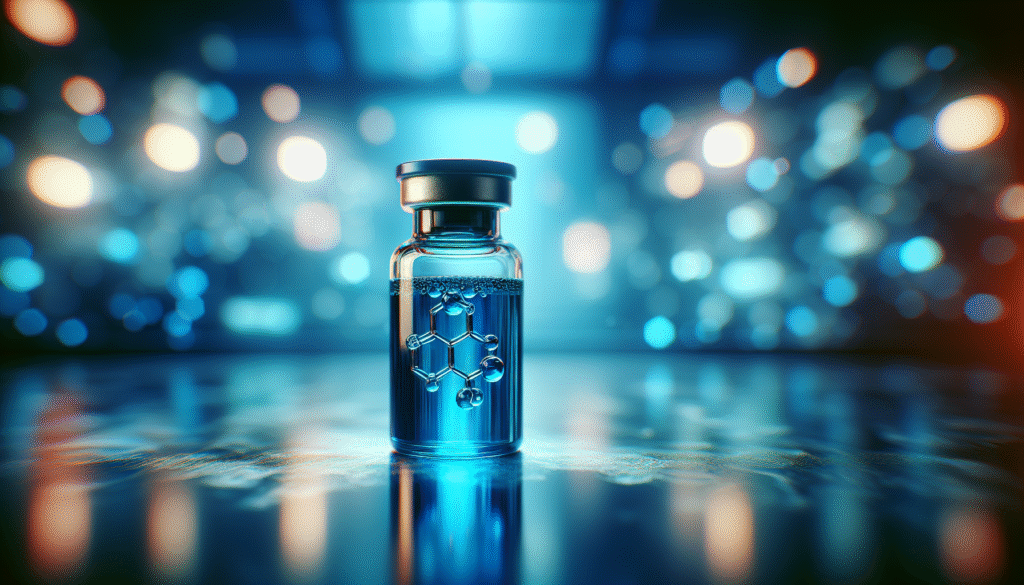
What would you say if I told you that a single compound, often overlooked in medicine, holds significant potential for both therapeutic applications and potential side effects? Methylene blue is one such compound, and understanding its uses, benefits, and potential risks is essential for anyone considering its use.
What is Methylene Blue?
Methylene blue is a synthetic dye that has been utilized for various medical and industrial purposes. It was first synthesized in 1876 and has since gained recognition for its unique properties. Primarily, it has been used as a diagnostic agent and as a treatment for conditions such as methemoglobinemia, a blood disorder where hemoglobin cannot effectively release oxygen to body tissues.
Chemical Properties of Methylene Blue
Methylene blue is a thiazine dye, characterized by its deep blue color. Its chemical formula is C16H18ClN3S, and it has a molecular weight of 319.85 g/mol. This compound is soluble in water, which enables its use in a variety of medical applications.
| Property | Description |
|---|---|
| Chemical Formula | C16H18ClN3S |
| Molecular Weight | 319.85 g/mol |
| Solubility in Water | Soluble |
| Color | Deep Blue |
Medical Uses of Methylene Blue
Methylene blue has a range of medical applications, some of which are well-established, while others are emerging. Understanding these uses can help you assess whether this compound may be appropriate for your needs.
Treatment of Methemoglobinemia
One of the most established uses of methylene blue is in the treatment of methemoglobinemia. This condition can arise from various factors, including exposure to certain drugs or chemicals. Methylene blue works by facilitating the conversion of methemoglobin back to hemoglobin, allowing for improved oxygen transport in the blood.
Antiseptic Properties
Methylene blue has been recognized for its antiseptic properties and is sometimes used in dermatology to treat skin infections. Its ability to inhibit bacterial growth can help in wound management, although it is not a first-line treatment.
Potential Role in Alzheimer’s Disease
Recent studies suggest that methylene blue may have neuroprotective properties, potentially benefiting individuals with Alzheimer’s disease. Research indicates that it may help reduce tau protein aggregation, a hallmark of Alzheimer’s pathology. However, this avenue of research is still in the early stages, necessitating further investigation.
Other Therapeutic Applications
Beyond its traditional uses, methylene blue is being studied for various other applications, including:
- Antidepressant Effects: Some research suggests that methylene blue may exhibit properties that improve mood and alleviate symptoms of depression.
- Photodynamic Therapy: Its photosensitizing capabilities are being explored in cancer treatment, where it can be activated by light to target and destroy cancerous cells.

Dosage and Administration
When considering methylene blue for therapeutic purposes, it is crucial to understand how to use it safely and effectively.
Recommended Dosages
The appropriate dosage can vary depending on the condition being treated. For the treatment of methemoglobinemia, the typical dosage is 1-2 mg/kg administered intravenously. For other uses, such as therapeutic applications in research, dosages may differ substantially and should always be discussed with a healthcare provider.
Administration Methods
Methylene blue can be administered through various routes, including:
- Intravenous Injection: Common for acute treatment of methemoglobinemia.
- Oral Tablets: Available for other applications, though less common due to variable absorption rates.
- Topical Solutions: Used in dermatology for localized infections.
Side Effects and Precautions
While methylene blue can offer significant benefits, it is essential to be aware of the potential side effects and precautions associated with its use.
Common Side Effects
Some common side effects include:
- Skin Discoloration: The most notable effect is a temporary blue discoloration of the urine and skin, which is harmless.
- Gastrointestinal Distress: Nausea or vomiting may occur, particularly with oral administration.
- Headaches: Some individuals report headaches following administration.
Serious Side Effects
In rare cases, more severe side effects may arise, including:
- Allergic Reactions: While uncommon, symptoms like rash, itching, or difficulty breathing warrant immediate medical attention.
- Serotonin Syndrome: Methylene blue can increase serotonin levels, particularly when combined with certain antidepressants.
Contraindications
Certain conditions may contraindicate the use of methylene blue. These include:
- G6PD Deficiency: Individuals with this genetic disorder are at risk for hemolytic anemia when using methylene blue.
- Concurrent Use of SSRIs: The risk of serotonin syndrome increases with simultaneous use of selective serotonin reuptake inhibitors (SSRIs).

Interactions with Other Medications
Methylene blue can interact with several medications, which can influence its effectiveness and safety. Understanding these interactions is critical for safe usage.
Medications to Avoid
- Antidepressants: As mentioned, SSRIs and other serotonin-elevating medications can lead to dangerous interactions.
- MAO Inhibitors: The risk of severe hypertensive crisis exists when methylene blue is taken with monoamine oxidase inhibitors.
- Certain Anticoagulants: Methylene blue can potentially affect coagulation profiles.
Consultation with Healthcare Providers
Always inform your healthcare provider about all medications you are currently taking. This transparency allows for more personalized recommendations and minimizes adverse effects.
Storage and Stability
Proper storage of methylene blue is crucial to ensure its effectiveness.
Recommended Storage Conditions
Methylene blue should be stored at room temperature, away from light and moisture. It should remain in its original, labeled container to avoid degradation.
Stability Concerns
While methylene blue is generally stable, prolonged exposure to light can degrade its chemical structure. Therefore, protecting it from light is essential for maintaining its efficacy.
Conclusion
Understanding the essential information surrounding methylene blue is critical if you are considering its use, whether for medical or research purposes. By familiarizing yourself with its uses, dosages, potential side effects, and interactions, you can make informed decisions in collaboration with your healthcare provider. As with any medication, individual circumstances vary, and professional guidance leads to the safest and most effective use of methylene blue.
As research continues to unravel the complexities of this compound, it stands at the intersection of traditional medicine and emerging therapeutic strategies. Make sure to stay updated on the latest advancements regarding methylene blue and speak with healthcare professionals to keep informed about its potential uses in your health journey.